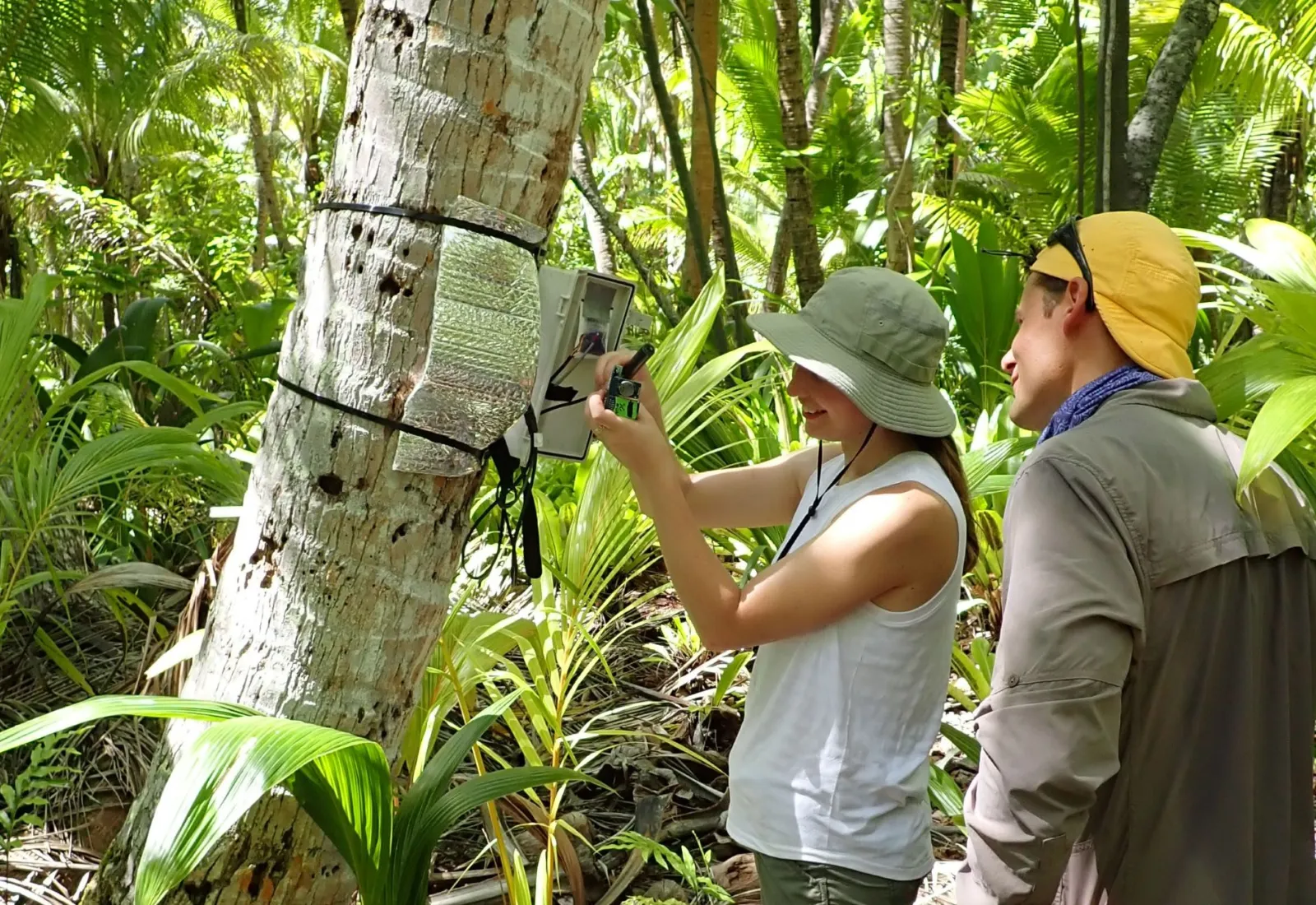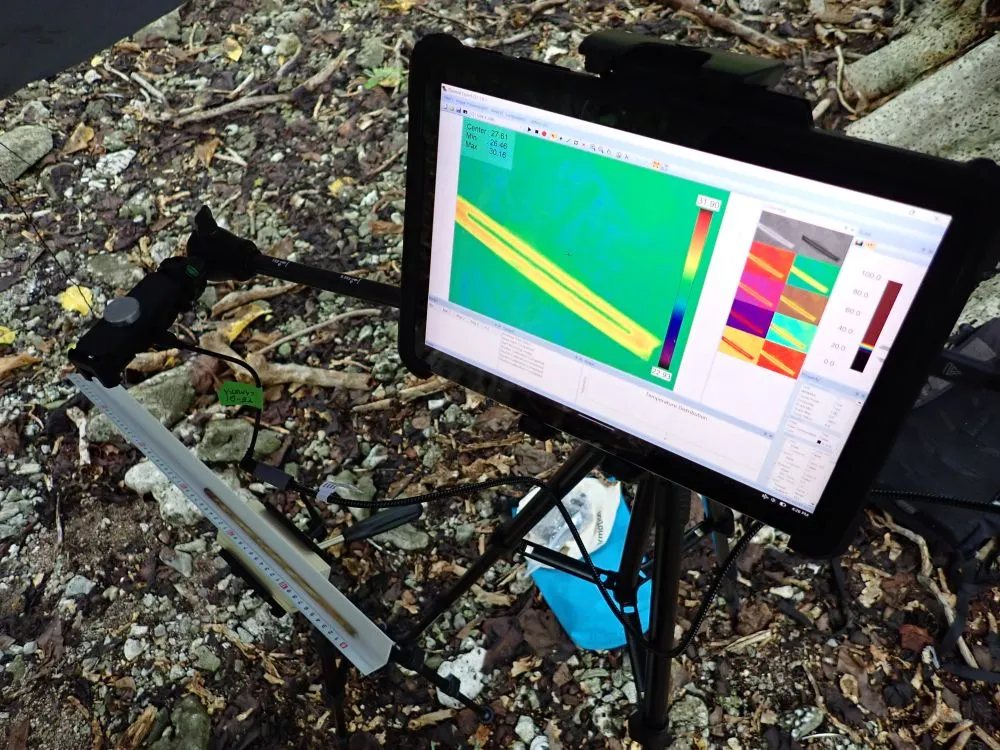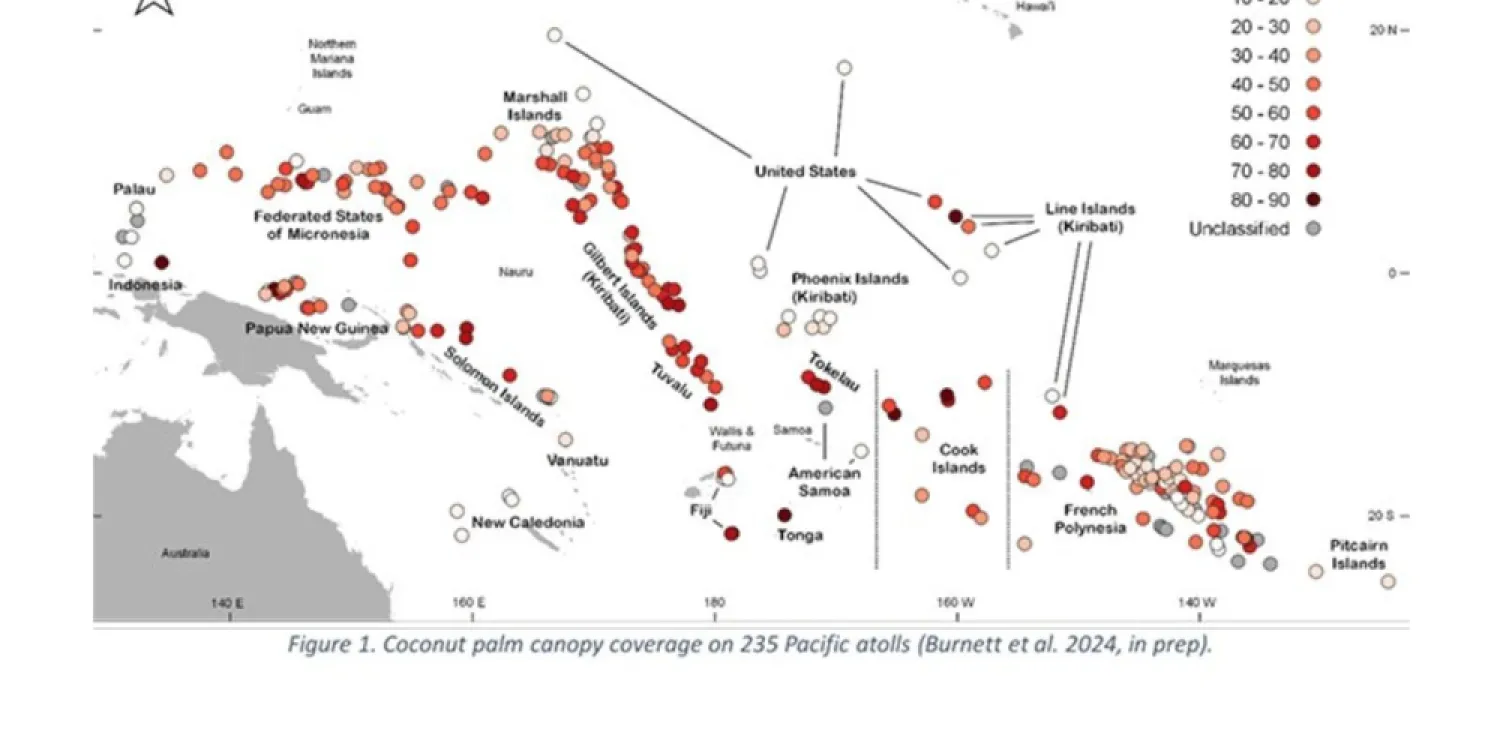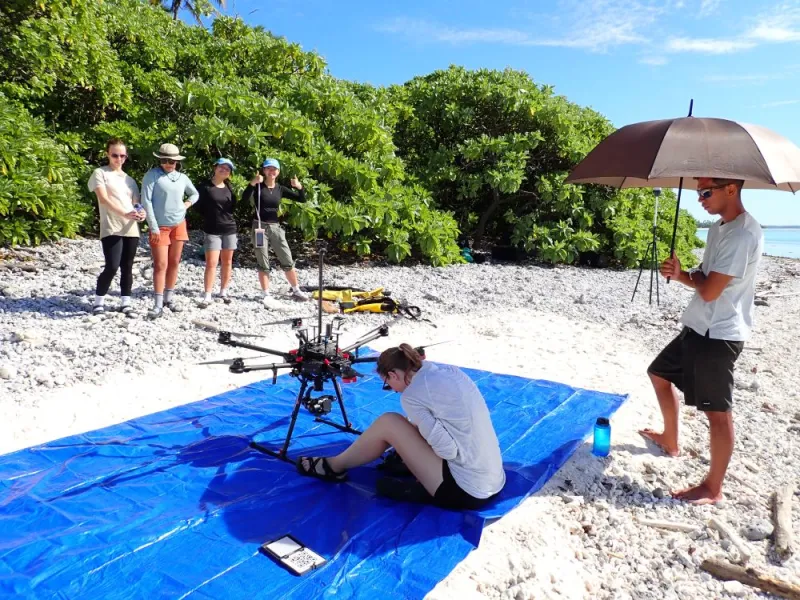This project, led by Michael Burnett, a doctoral student at the University of California, Santa Barbara (UCSB), with the participation of Hillary Young, Kelly Caylor, and Leander Anderegg, seeks to understand how different tree species on Tetiaroa Atoll use groundwater resources. The study focuses in particular on the coconut palm/ha'ari (Cocos nucifera), the puatea or cabbage tree (Pisonia grandis), the tahinu or tree heliotrope (Heliotropium arboreum), the fara (Pandanus tectorius) and the naupata (Scaevola taccada), with the aim of quantifying their water consumption and analyzing the interactions between vegetation, groundwater depth, and salinity. By seeking to better understand the adaptation mechanisms of these species, the project contributes to assessing the resilience of tropical atoll ecosystems to climate pressures and water resource variation. The program, running from January 2024 to July 2025, is part of a scientific partnership between the University of California, Santa Barbara (UCSB) and the Tetiaroa Society.
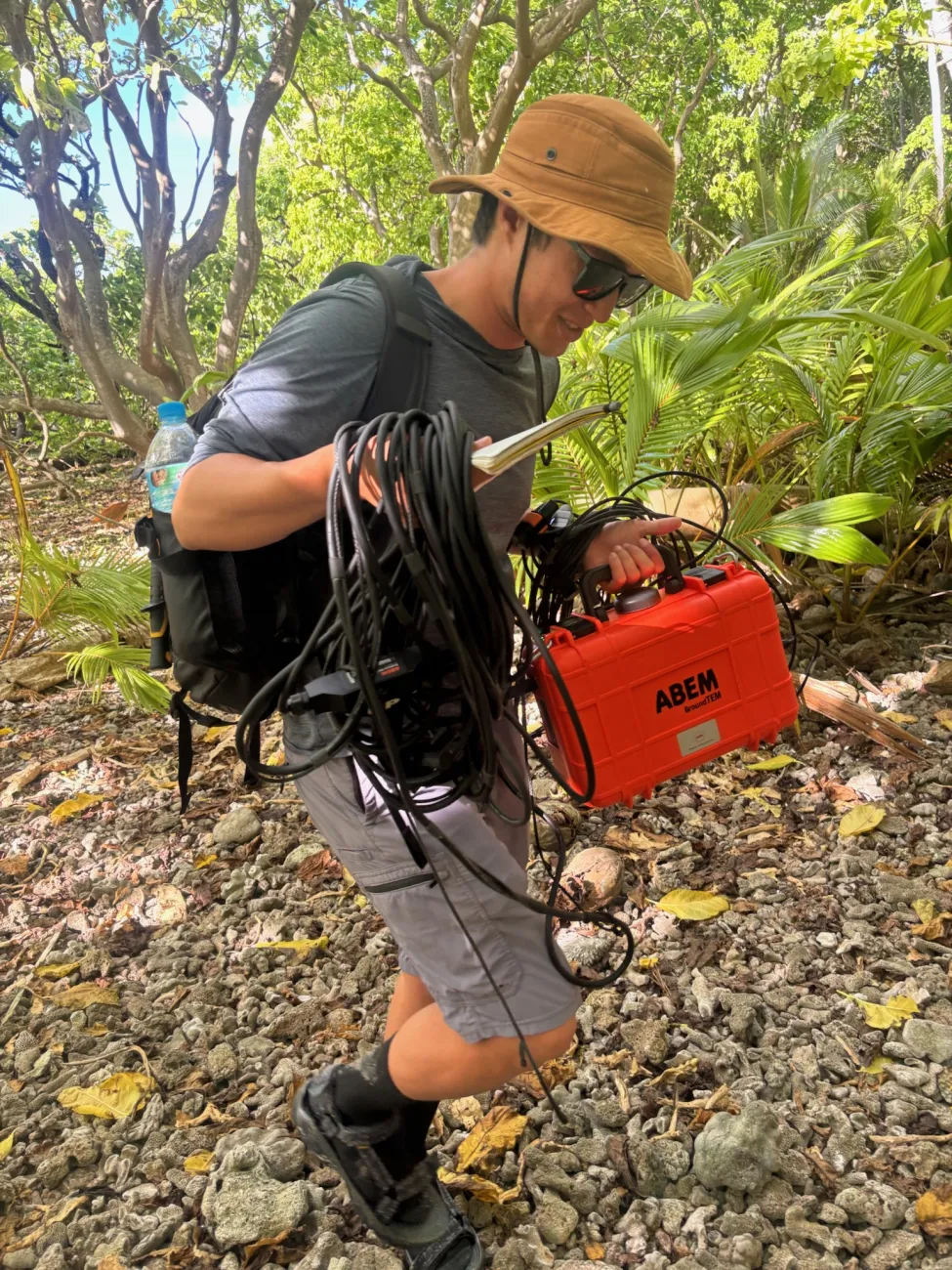
Summary of field activities
The final mission took place in July 2025 with five team members: Michael Burnett, Rebecca Sandoval, Nell Thompson, Marlys Kutach, and Kimberly Wong. The main objective was to retrieve the seventy sap flow sensors installed on Reiono, Tahuna Iti, and Tiaraunu, and then download all the data collected since the beginning of the study. The team also conducted approximately eighty geophysical surveys on Onetahi, Tiaraunu, Reiono, Tahuna Iti, Rimatuu, and Hiraanae, to measure the depth of freshwater and saltwater aquifers using electromagnetic induction. At each site, these measurements were supplemented by a vegetation survey to link the hydrological observations to local ecological conditions. During this mission, the researchers also explored several low-lying and wetland areas on Reiono, often avoided during previous visits. These areas, which are very popular with land crabs, are distinguished by a high density of coconut trees, which suggests that this species adapts particularly well to waterlogged soils.
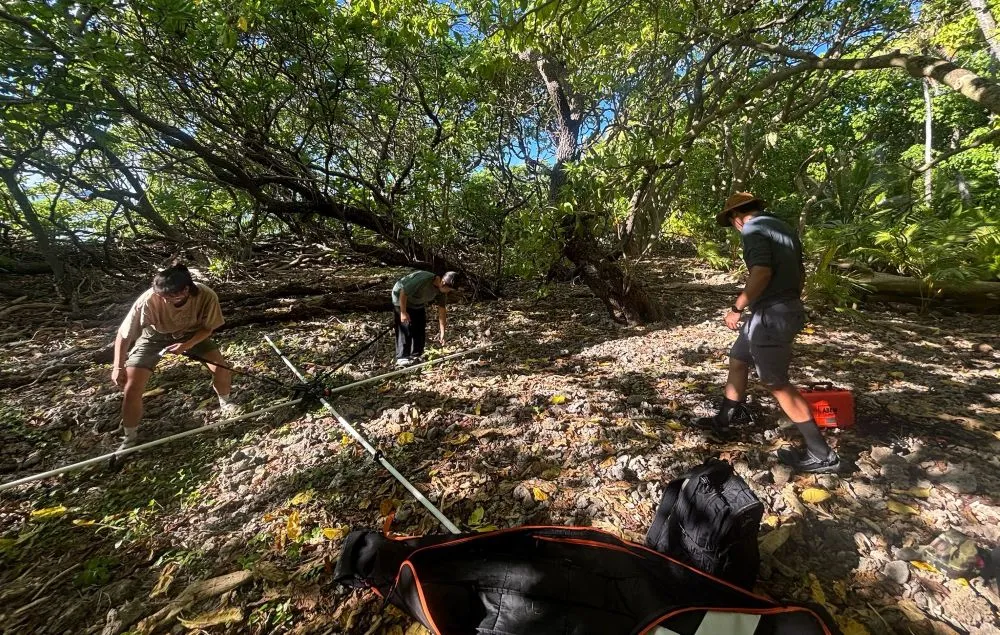
Impacts and preliminary results
Data analysis is still ongoing, but some field observations are already proving interesting. The wetlands observed on Reiono appear to favor the growth of coconut palms, which appear better adapted to waterlogged soils than Pisonia. These coconut groves may also benefit from some protection against storms, as the lower topography appears to mitigate the impact of wind and waves. These findings pave the way for a better understanding of the relationships between the physical characteristics of the soil, salinity, and the distribution of plant species on the atoll. Initial analyses should make it possible to precisely quantify water consumption by species and relate these values to the local conditions observed on each motu.
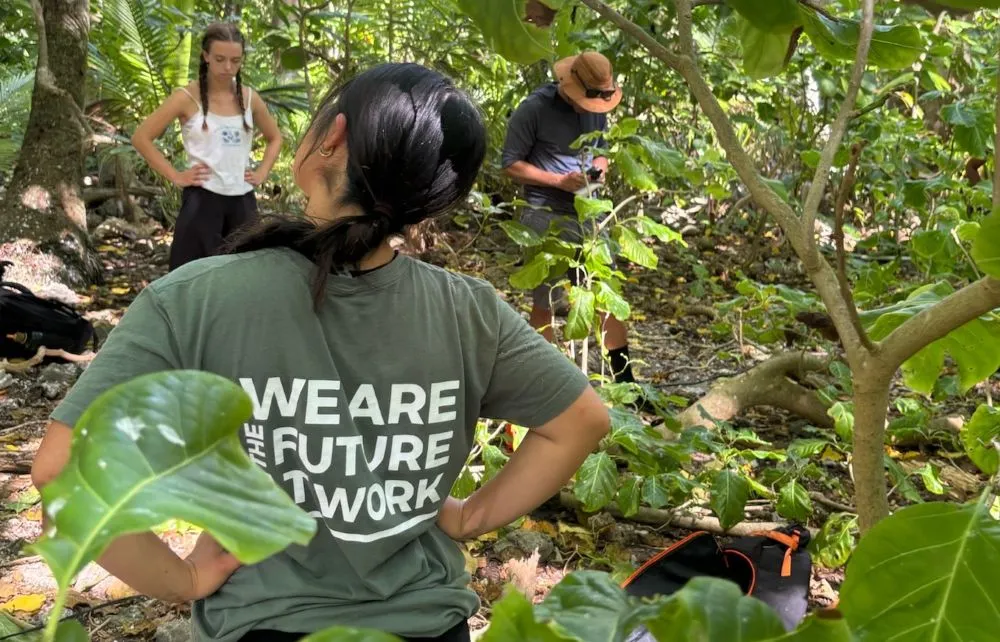
Perspectives
In the next phase of the project, the team will focus its efforts on processing and interpreting the collected data to estimate species-specific water use rates and identify factors influencing these variations. The results will be integrated into a broader comparative approach to other Pacific island systems, with the aim of better understanding plant adaptation strategies to environments with low freshwater availability. At this stage, no return to Tetiaroa is planned in the short term, but a further field trip is planned at a later date to validate the findings and strengthen the scientific collaboration between UCSB and the Tetiaroa Society.


